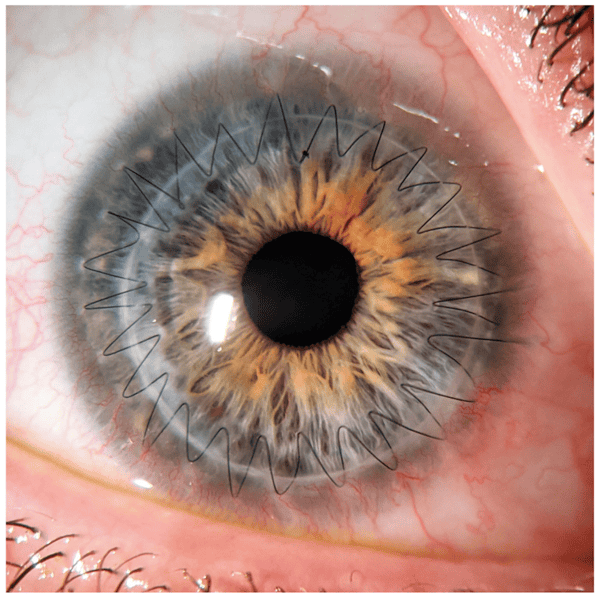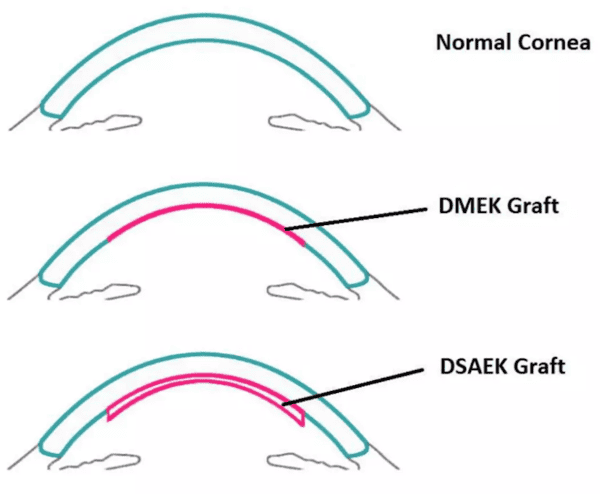What is a corneal transplant?
A corneal transplant, also known as keratoplasty, is a surgical procedure where a damaged or diseased cornea is replaced with a healthy donor cornea. This procedure aims to restore vision and improve eye health when the cornea becomes cloudy or deformed.
Common Conditions Requiring Corneal Transplants:
Keratoconus: A condition where the cornea becomes thin and bulges into a cone shape.
Fuchs’ Corneal Endothelial Dystrophy: A condition that causes the cornea to swell and become cloudy.
Corneal scarring: Often from injury, infection, or previous eye surgery.
Bullous Keratopathy: A painful condition due to damaged corneal cells leading to fluid buildup.

What are the types of corneal transplant?
Corneal transplant surgery has undergone significant advances in the last 20 years and new surgical techniques have allow targeted transplantion to ensure the best results and quickest recovery. The type of transplant a patient will require depends on the nature of condition affecting their cornea.
The types of corneal transplants include:
Penetrating Keratoplasty (PK)
Penetrating keratoplasty is a full-thickness corneal transplant where the entire damaged cornea is replaced with a healthy donor cornea. It is used for severe corneal scarring or disease affecting the whole cornea. Read more about penetrating keratoplasty here.
Deep Anterior Lamellar Keratoplasty (DALK)
DALK is a partial-thickness corneal transplant that replaces only the front layers of the cornea. It is commonly used for conditions like keratoconus, preserving the inner layers of the cornea and often results in longer transplant survival. Read more about deep anterior lamellar keratoplasty here.
Descemet Membrane Endothelial Keratoplasty (DMEK)
DMEK is a specialized, extremely thin, partial-thickness corneal transplant that only replaces the damaged Descemet membrane and endothelial layer of the cornea. These are the very thin inner layers of the cornea. DMEK is typically used for conditions like Fuchs’ dystrophy and bullous keratopathy. Read more about DMEK here.
Descemet’s Stripping Automated Endothelial Keratoplasty (DSAEK)
DSAEK involves removing the damaged endothelial layer and replacing it with a donor tissue. This procedure is used for conditions affecting the inner cornea, such as Fuchs’ dystrophy or bullous keratopathy. It offers faster recovery than full-thickness transplants and is often required for more complex corneal diseases. Read more about DASEK here.
Corneal Allogenic Intrastromal Ring Segments (CAIRS)
CAIRS is a procedure where donor corneal ring segments are inserted into the stroma (middle layer) of the cornea to correct irregularly shaped corneas. It is often used for patients with keratoconus to improve vision and corneal shape. Read more about CAIRS here.

